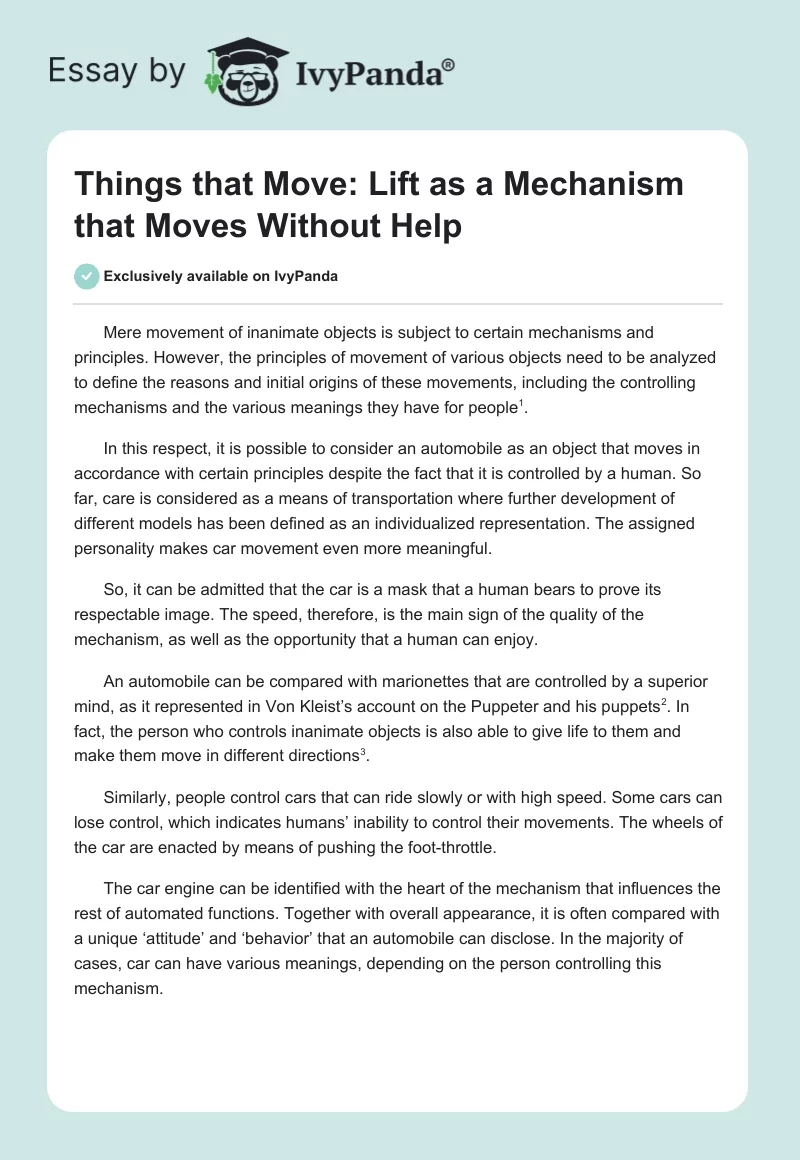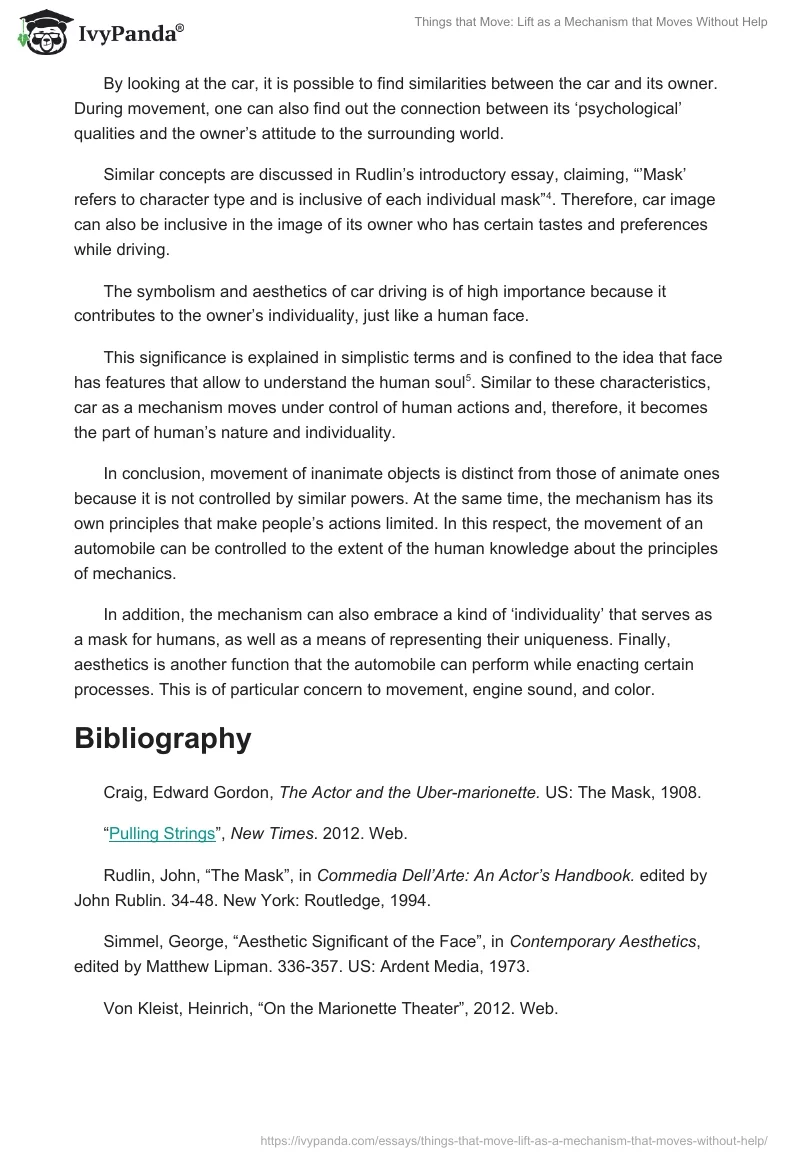Mere movement of inanimate objects is subject to certain mechanisms and principles. However, the principles of movement of various objects need to be analyzed to define the reasons and initial origins of these movements, including the controlling mechanisms and the various meanings they have for people.
In this respect, it is possible to consider an automobile as an object that moves in accordance with certain principles despite the fact that it is controlled by a human. So far, care is considered as a means of transportation where further development of different models has been defined as an individualized representation. The assigned personality makes car movement even more meaningful.
So, it can be admitted that the car is a mask that a human bears to prove its respectable image. The speed, therefore, is the main sign of the quality of the mechanism, as well as the opportunity that a human can enjoy.
An automobile can be compared with marionettes that are controlled by a superior mind, as it represented in Von Kleist’s account on the Puppeter and his puppets. In fact, the person who controls inanimate objects is also able to give life to them and make them move in different directions.
Similarly, people control cars that can ride slowly or with high speed. Some cars can lose control, which indicates humans’ inability to control their movements. The wheels of the car are enacted by means of pushing the foot-throttle.
The car engine can be identified with the heart of the mechanism that influences the rest of automated functions. Together with overall appearance, it is often compared with a unique ‘attitude’ and ‘behavior’ that an automobile can disclose. In the majority of cases, car can have various meanings, depending on the person controlling this mechanism.
By looking at the car, it is possible to find similarities between the car and its owner. During movement, one can also find out the connection between its ‘psychological’ qualities and the owner’s attitude to the surrounding world.
Similar concepts are discussed in Rudlin’s introductory essay, claiming, “’Mask’ refers to character type and is inclusive of each individual mask”. Therefore, car image can also be inclusive in the image of its owner who has certain tastes and preferences while driving.
The symbolism and aesthetics of car driving is of high importance because it contributes to the owner’s individuality, just like a human face.
This significance is explained in simplistic terms and is confined to the idea that face has features that allow to understand the human soul. Similar to these characteristics, car as a mechanism moves under control of human actions and, therefore, it becomes the part of human’s nature and individuality.
In conclusion, movement of inanimate objects is distinct from those of animate ones because it is not controlled by similar powers. At the same time, the mechanism has its own principles that make people’s actions limited. In this respect, the movement of an automobile can be controlled to the extent of the human knowledge about the principles of mechanics.
In addition, the mechanism can also embrace a kind of ‘individuality’ that serves as a mask for humans, as well as a means of representing their uniqueness. Finally, aesthetics is another function that the automobile can perform while enacting certain processes. This is of particular concern to movement, engine sound, and color.
Bibliography
Craig, Edward Gordon, The Actor and the Uber-marionette. US: The Mask, 1908.
“Pulling Strings”, New Times. 2012. Web.
Rudlin, John, “The Mask”, in Commedia Dell’Arte: An Actor’s Handbook. edited by John Rublin. 34-48. New York: Routledge, 1994.
Simmel, George, “Aesthetic Significant of the Face”, in Contemporary Aesthetics, edited by Matthew Lipman. 336-357. US: Ardent Media, 1973.
Von Kleist, Heinrich, “On the Marionette Theater”, 2012. Web.


